Table of Contents

What is meant by virtual keyboard? Definition & Examples
Virtual keyboards are software-based input interfaces included in most digital devices which enable users to input written text. These virtual keyboards are meant to replace physical hardware keyboards, either because the device they are embedded in has a touchscreen, or to be used as a secondary option.
What devices have virtual keyboards?
Virtual keyboards are present in most mobile devices with touchscreen and also those with remote controllers, like Smart TVs and video-game consoles. Their main advantage is that they have embedded functions that can improve user experience further than just typing. These features include text prediction, autocorrection, multiple languages and layouts, and data privacy, thanks to encryption and other protocols. In addition, they can be customized to match users’ needs and even companies can develop their own virtual keyboard in accordance with the products they offer in many different industries.
Types of virtual keyboards
Different types of virtual keyboards can be found according to the devices and also the apps used. Depending on the case, every app can have its own keyboard, or you can install third-party options that function device-wide. Using a single keyboard in all apps can be the best in terms of customization, as you can use the predictive text tool, for instance, which gets better the more you use it. There are several other features that can make your use of the virtual keyboard easier and faster.
On-screen virtual keyboards
Virtual keyboards can be the replacement of physical keyboards or a complement to them for specific matters, especially accessibility and privacy. They usually have a full-alphabet layout, including one single “key” for each letter, and some others for numbers and special functions. However, with the Fleksy virtual keyboard, they can be adapted to fit your needs.
For example, the most common layout is QWERTY, but you can also find AZERTY, Dvorak and other layouts in the keyboard settings. You can even find specific keyboard layouts for languages with non-Latin alphabets, such as Japanese or Russian. Furthermore, you can also change the keyboard’s design by adding a background photo, or changing the colors. This won’t only give your device a customized look, but it can also be important in terms of accessibility in case of color blindness, for instance. See more details about Fleksy’s SDK UI and features.
Gesture-based virtual keyboards
The most typical way of typing in a keyboard is to tap on one letter at a time to insert them in the on-screen text box, but many virtual keyboards nowadays include the gesture function. Gestures simplify typing by allowing the user to swipe their finger from one key to another instead of tapping each of them, creating a sort of circuit on the screen, to write words. Gestures are not only useful for typing, but they can also be shortcuts to activate functions, deleting or scrolling through the written text.
Voice recognition virtual keyboards
Another way of writing that can increase the accessibility of a keyboard is the voice recognition function. This allows the user to speak to the phone and have it transcript speech into written text. However, these features are still far from perfect even in the most well-known examples, like Siri or Alexa. These programs still have a lot of trouble understanding commands, deploying the right functions and providing accurate speech-to-text transcription. Due to this, at Fleksy, we have identified significant errors in speech recognition, indicating that there is substantial scope for improvement in that area.
Controller-based virtual keyboards
The most well-known versions of virtual keyboards are those present on devices with touch screens. However, other devices can also have virtual keyboards, such as smart TVs, video-game consoles, and even more complex systems like personal digital assistants and virtual environments like the metaverse. In these cases, there’s an on-screen keyboard but, as the screen cannot be touched to insert text, the user has to use a remote controller to move across the keys and select them one by one. Considering this process takes longer than tap typing, in this case, text prediction is essential.
In-app virtual keyboard
Virtual keyboards usually work in all apps across the device. These can be either a default keyboard that is pre-installed with the operative system, or it can be a third-party keyboard chosen by the user. However, some developers can insert their own original keyboards to enhance user experience within the app. This is particularly true in banking or medical applications to ensure data security. Besides, creating a particular keyboard for your app allows you to create one that is specially customized to suit your users’ needs. These keyboards share usage information that is key for adapting the layout and the features within the in-app keyboard.
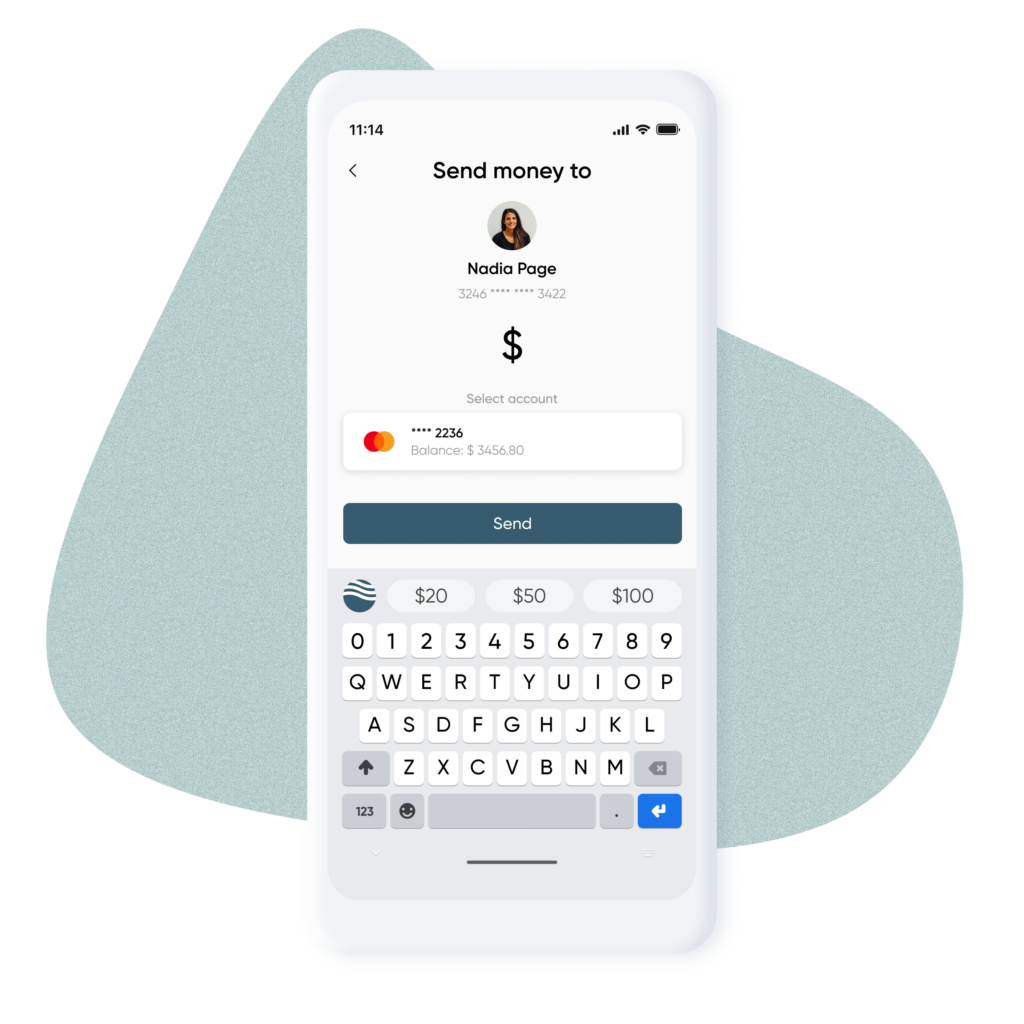
What is a virtual keyboard used for? (Benefits for final users & organizations)
There’s no need to say that virtual keyboards are used for entering texts into devices, but they also have many other interesting benefits for both users and organizations.
Enhanced security and privacy
Believe it or not, using virtual keyboards is safer than using physical keyboards. In terms of software, devices can be affected by viruses that can track keystrokes and thus save everything the user types, including passwords. On the other hand, anyone watching the user enter text can find it harder to track the written text than by looking at the user’s hands on a physical keyboard. By using virtual keyboards, especially if they have certain extra characteristics (for example, not highlighting keys when tapped), entering passwords is safer.
Besides, the Fleksy SDK is ideal for those developers who are particularly focused on mobile app security, as we use the highest standards in cybersecurity to ensure that your keyboard users have an excellent and also safe experience. For instance, corrections and suggestions are made locally, so there is no need to save input on cloud servers.
Improved user experience and accessibility
One of the main advantages of virtual keyboards over physical ones is that the features mentioned before make typing a lot faster than using physical keyboards. Besides, they can include other extra functions that can improve user experience to a new level. Fleksy-based keyboards include mini-apps embedded within the keyboard to make their use easier and faster, as users do not need to move from one app to another to access their functions. Learn how to create the ideal virtual keyboard to suit your needs here!
Cost-effectiveness
Creating your own virtual keyboard can be extremely costly, not only in terms of monetary expenses but also dedicated time. Ideating the design and functionalities for new software might not be so hard, but the technical steps are the ones requiring the hardest work. To skip all the tedious parts, you can create your own keyboard using the Virtual Keyboard SDK, which already contains everything you need in relation to autocorrection and text prediction tools, together with strong privacy protocols.
On the other hand, having a virtual keyboard can represent a reduction in costs for final customers, as their devices do not need to have a physical keyboard. Even hardware keyboards on desktop computers can be replaced with virtual keyboards if necessary, which allows the user not to buy a replacement in case of malfunctioning.
Customizability and flexibility
The most valuable feature of virtual keyboards has to be their customizability. Physical keyboards can be adapted in terms of aesthetics, as users can change keycaps and switches, or even add lighting. In comparison, virtual keyboards are more customizable in terms of functionality. Users can adapt the keyboard on their phones by changing the size, font, and color of the text, as well as functionalities like tapping sensitivity or haptic features. This allows every user to adapt the keyboard to their own needs. However, when focusing on the development of new keyboards, the Fleksy SDK allows you to create new keyboards with new functions based on your business needs, without leaving aside a strong commitment towards privacy assurance and improved user experience.
Industries that can benefit from using a virtual keyboard
Thanks to the functionalities and characteristics stated above, virtual keyboards have a number of benefits for both final users and also organizations, and they can have particular advantages in different specific industries.
Healthcare
The benefits of virtual keyboards in healthcare are not only based on improved user experience but also have health benefits in public environments and particular features that physicians can use for disease detection and treatment.
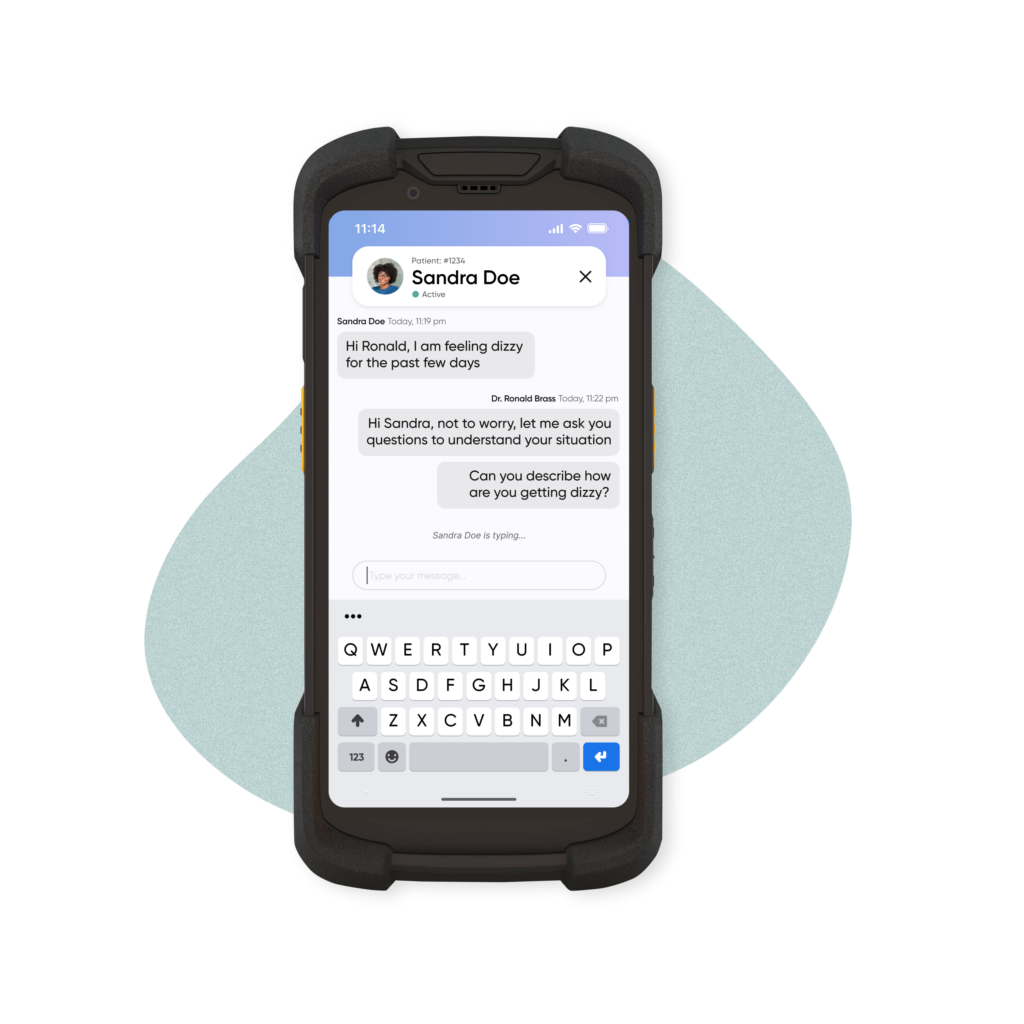
The same way we have unique DNAs and fingerprints, we also have a unique way of typing on devices. The cadence, the pauses, and the pressure create a personal profile called digital phenotyping. Virtual keyboards can collect information about every user’s typing habits and detect anomalies, which can help doctors detect the appearance of neurological illnesses and start early treatments.
Furthermore, as doctors and patients can communicate virtually, keyboards need to comply with a series of privacy assurance protocols, like HIPAA. Using the Fleksy SDK, you can create an app that allows secure texting for healthcare and make sure that all your information and your patients’ is safe.
Augmented and Virtual Reality
Although augmented and virtual reality are usually confused, and even if they are two sides of the same coin, they can clearly be told apart, and their use of virtual keyboards is different.
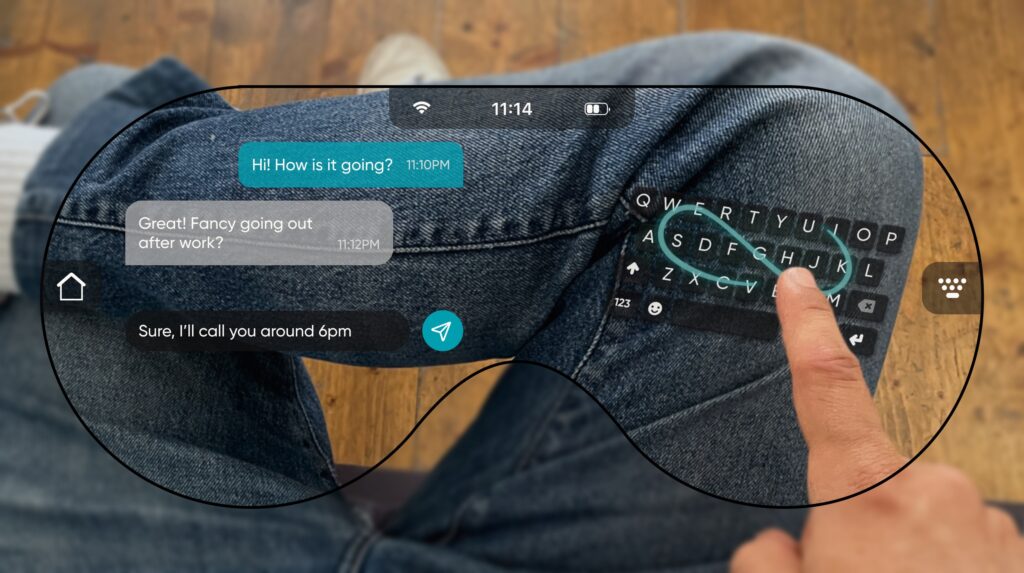
Augmented reality(AR) refers to the integration of real life and virtual elements, usually with interaction between both parts, like Instagram filters. On the other hand, virtual reality (VR) is a virtual environment where the user is totally immersed thanks to electronic goggles or helmets.
But how can you input text in AR or VR? In both cases, virtual keyboards are necessary, as using a physical keyboard can either be atmosphere-breaking or impossible to use. In the case of augmented reality, there are some cases of hologram keyboards representing a physical one, which users can “tap” on, while virtual reality environments usually offer “floating” keyboards that users can access with wearable accessories or eye-tracking technology.
Generative AI
Generative AI has to be one of the most impressive advancements in technology in the last years, and virtual keyboard manufacturers cannot ignore it. In fact, you can already find some virtual keyboards with embedded ChatGPT-like tools to allow users to create automatic text and also give orders to their devices, and even AutoGPT tools that allow users to create their own AI systems tailored according to their needs, using the GPT-3 model as a base.
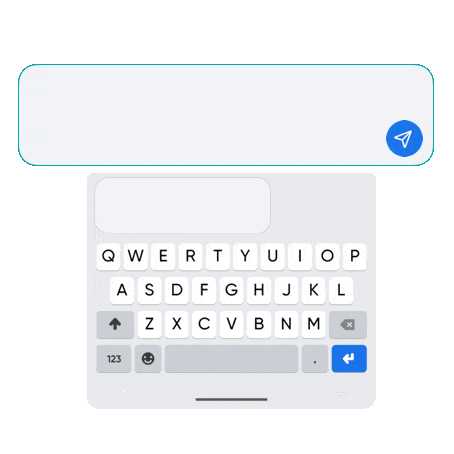
Banking
Thanks to the Fleksy SDK, final users can use the mini-apps embedded within the keyboard to perform P2P payments from their banking providers’ extensions without leaving the texting app. From the point of view of banking organizations, internal apps can ease customer relations management by using chatbots, and embedded mini-apps too. In addition, in terms of security, banking apps can create their own in-app virtual keyboards with the Fleksy SDK to ensure that confidential information is kept safely.
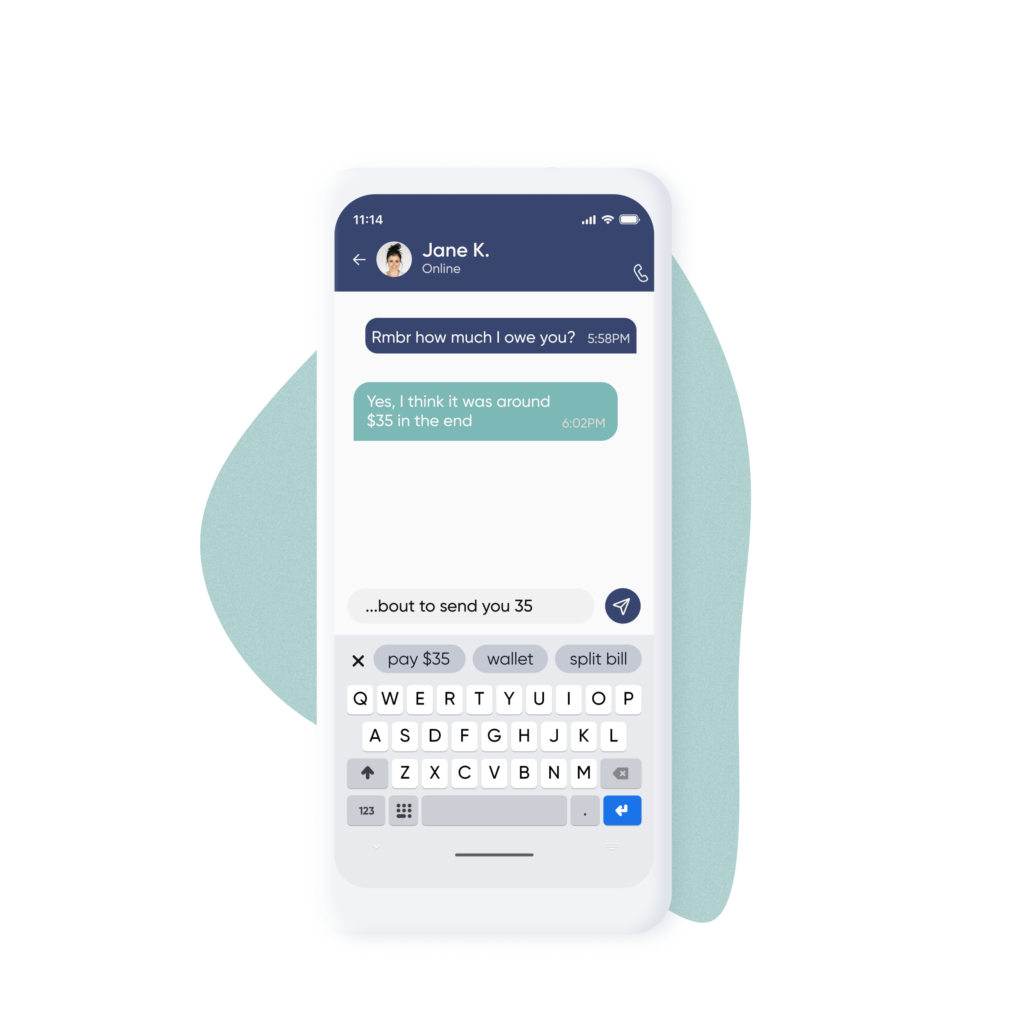
Cybersecurity
In terms of cybersecurity, most virtual keyboards in general carry the benefits mentioned before. But for what concerns security matters, we came to the realization that keyboard companies have largely overlooked the importance of privacy considerations these past years.
At Fleksy, we have a true commitment to making development and user experience the safest. We have built our technology and algorithms to operate exclusively on local processing, ensuring that server-side personal data processing is never required. Lastly, our virtual SDK follows the highest standards in security, making it ideal for creating secure apps as well as other platforms containing sensitive information.
Factors to consider when choosing a virtual keyboard software
As there are so many options to choose from in the market, there are a few key points that you may want to consider as parameters for making a decision.
Functionalities
One of the main features you need to consider when selecting the ideal virtual keyboard for your business is the functionalities it provides. Choosing the Fleksy SDK will allow your developers to create a new keyboard with the fastest typing system, supported by advanced text prediction and autocorrection algorithms. Without having to keep this in mind, developers can focus on creating a fully-custom virtual keyboard, with more than 82 languages available, and taking care of their own data and their customers’, as Fleksy uses the strongest privacy protocols and encryption.
Privacy matters
Data breaches are some of the most dangerous digital threats for companies, not only when talking about business information but also sensitive customer data. To avoid these issues, companies design platforms to keep important files and make their employees sign NDA contracts. However, they don’t know that the messages sent or their phones can be the source of information any outsider could have access to if not taken care of. For this reason, the virtual keyboard used for corporate communication should be breach-proof, with strong privacy protocols, local storage and device-wide encryption.
Customization possibilities
Besides the main possibilities that software products can offer, it is important to see how adaptable they are to your company’s needs. Fleksy’s SDK can provide you not only with high-quality text prediction algorithms but also a wide range of customization options that your developers can work with. See some examples of how different businesses have used the Fleksy SDK for an adapted virtual keyboard that could fit their needs.
Case study (applications in key industries)
Tobii Dynavox
The Fleksy SDK has been used in Tobii Dynavox’s technology, which are assistive devices for people who cannot speak due to disabilities, but can use these text-to-speech devices. These devices resemble that of Stephen Hawking, who could not speak nor type because of his condition, amyotrophic lateral sclerosis. To meet the needs of people with different conditions, some of these devices work with a regular virtual keyboard, but some others include eye-tracking technology.
Social keyboard
Social keyboard has taken one step further in the virtual keyboard market by including an embedded ChatGPT-like function, which allows users to create answers from scratch, rewrite messages to improve the style and even translate it into other languages, without leaving the texting app.
Palm phones
The keyboard created with the Fleksy SDK for Palm phones is one of the clearest examples of the possibilities of customization. Using a full QWERTY keyboard on a phone as small as a credit card might seem like a challenge, but the outcomes are seamless. With some added extra gestures, the user experience is highly improved, even with a major size restriction.
Conclusion
Virtual keyboards have come to stay and make our digital experience easier by erasing the need for a physical device, and have further improved our experience with added-value features, like text prediction and autocorrection. However, there are still thousands of new functions and features waiting to be created within your own custom keyboard.
Fleksy fully owns and operates the Intellectual Property (IP) of our keyboard, granting you the freedom to build without encountering the limitations faced by AOSP keyboards. By having complete authority and control over your own keyboard, you can enjoy the benefits without the accompanying challenges and complexities. Learn more about our virtual keyboard SDK today!
FAQs
Can I customize a virtual on-screen keyboard?
Yes! Not only can you customize your current keyboard based on some basic parameters, but you can also create your own to fit your company’s needs. However, creating a virtual keyboard from scratch represents spending hundreds of hours on design, functionalities and brand-new added-value features. If you want a new keyboard adapted to your requirements, without the struggle of undergoing the whole process, you can build your own with the Fleksy SDK to get powerful text prediction algorithms, strong privacy protocols and all of Fleksy’s exclusive functionalities.
What are the different types of virtual keyboards?
There isn’t a specific classification of virtual keyboards, but they can be told apart by the features they include. For example, virtual keyboards can have gesture or swipe writing, haptic vibration, voice-to-text transcription and other more complex tools like eye-tracking.
What is the importance of a virtual keyboard?
Virtual keyboards are of utmost importance in most electronic devices, as they are the needed piece of software to enter text into these devices. The importance of a virtual keyboard lies in its ability to provide accessibility, convenience, and adaptability in user interfaces for various platforms.
Can virtual keyboards be used with non-touchscreen devices?
The most well-known examples of virtual keyboards are those on touchscreen devices. However, they are also present in devices used with remote controllers, like smart TVs and video-game consoles.